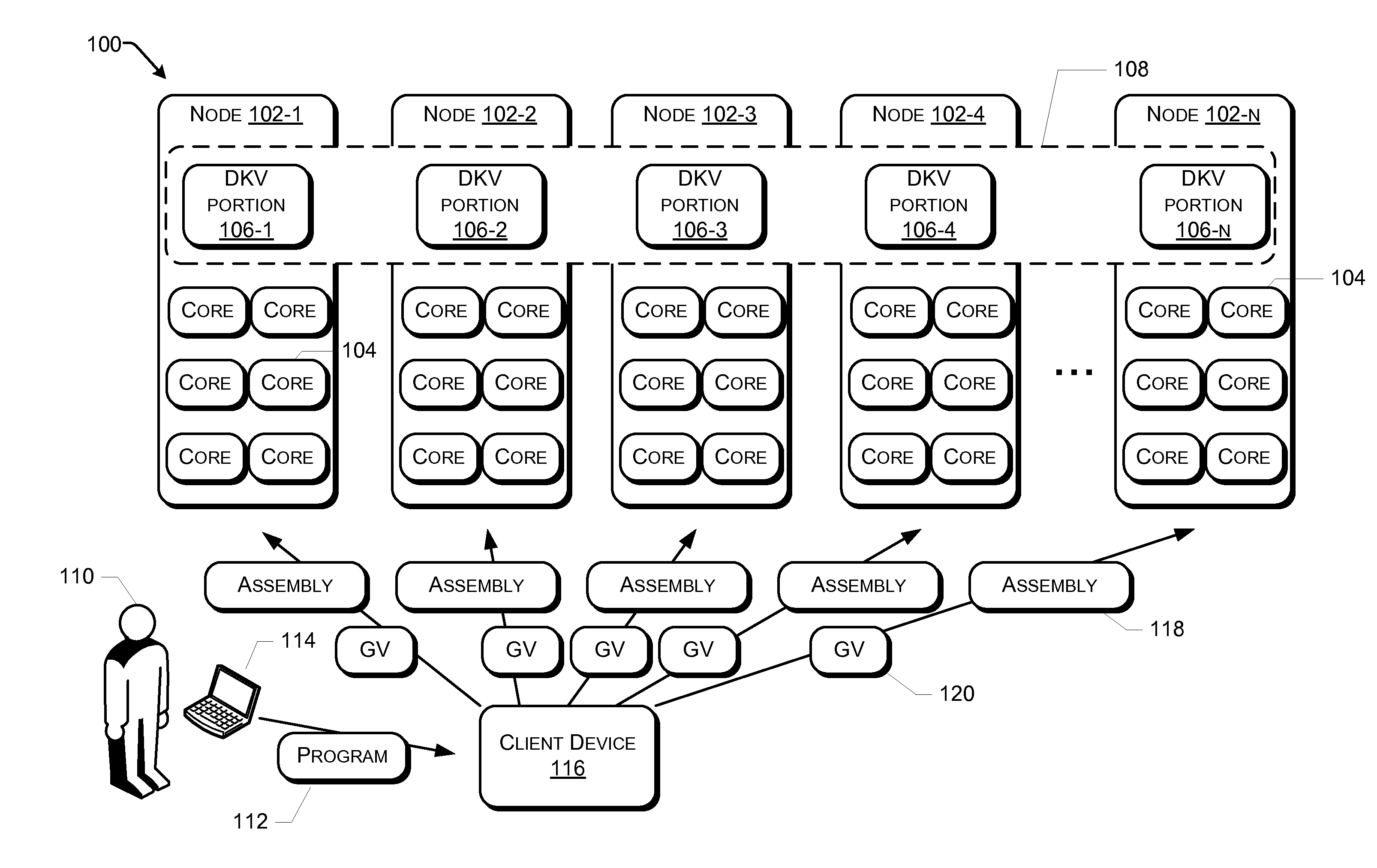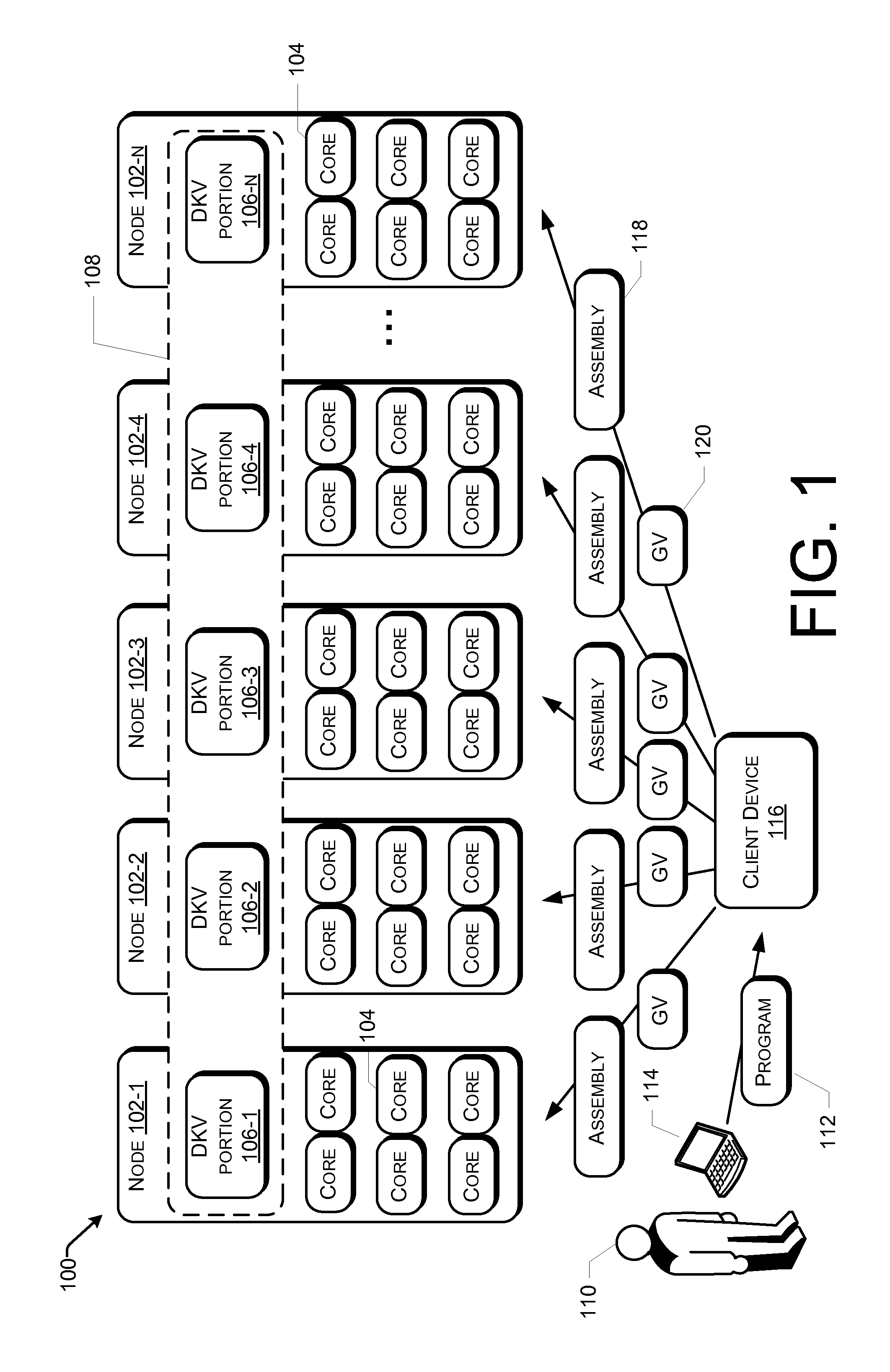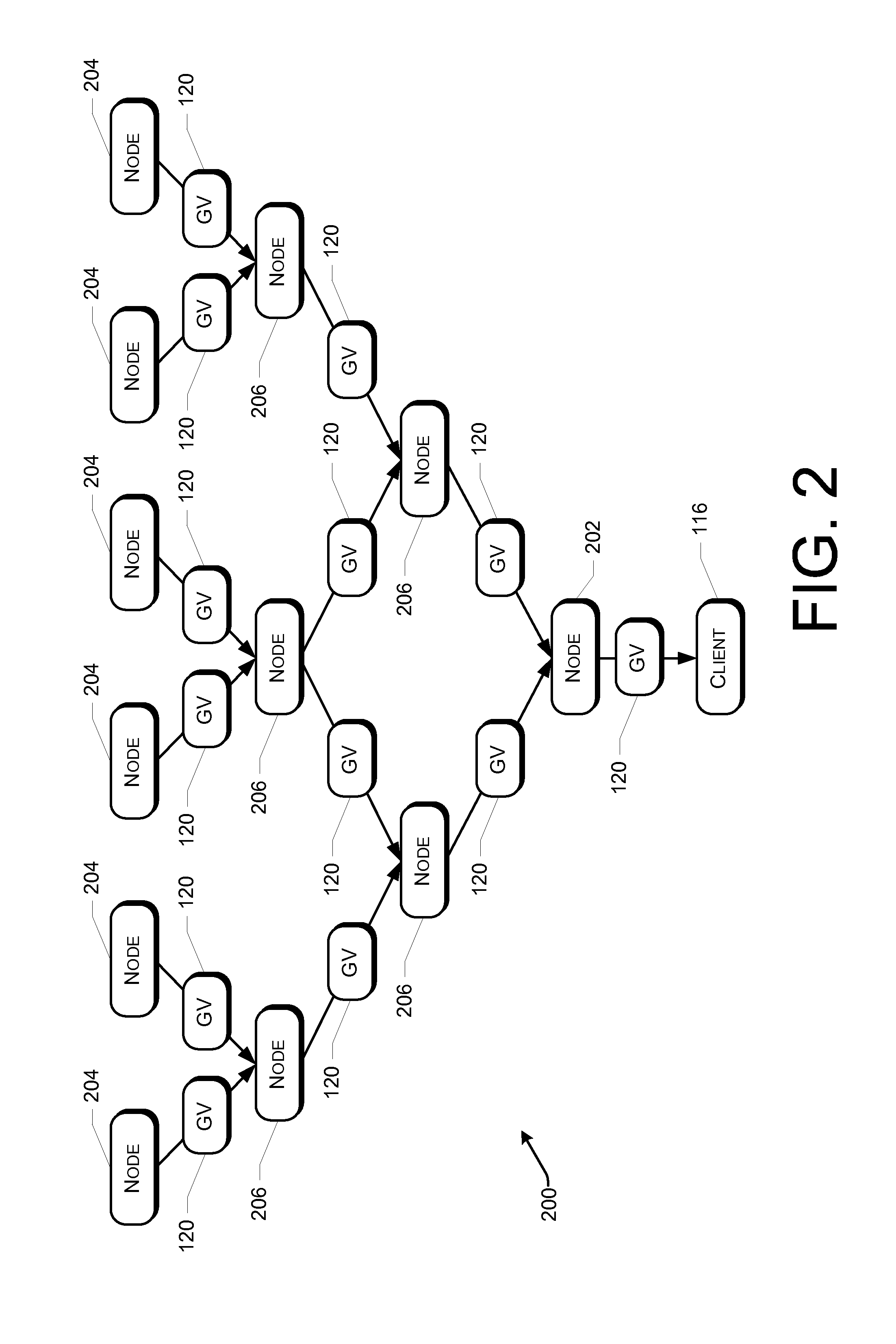Functional programming in distributed computing
a distributed computing and functional programming technology, applied in computing, digital transmission, instruments, etc., can solve the problems of data no longer fitting within the memory footprint of an individual device, distributed computing is complex, and computation on large data sets presents special problems in the field of computer scien
- Summary
- Abstract
- Description
- Claims
- Application Information
AI Technical Summary
Benefits of technology
Problems solved by technology
Method used
Image
Examples
example environment
[0015]FIG. 1 is a block diagram of an example distributed computing system 100 that executes distributed programs written in a functional style in accordance with various embodiments. The computing system 100 includes a plurality of nodes 102, and each node includes one or more processors 104 or processor cores 104. Portions 106 of a distributed key-value pair set (DKV) 108 are stored on different ones of the nodes 102. As used herein, a cluster includes a plurality of nodes 102 that collectively store all portions of a DKV 108. A node 102, in other embodiments, may also be a virtual machine, such as may be executed within a cloud computing environment.
[0016]As will be described in more detail elsewhere within this Detailed Description, a user 110 is enabled by the distributed computing system 100 to write a program 112 in a functional style. A user device 114 transmits either the program 112 or a compiled binary of the program 112 to a client device 116. Although shown as a separat...
example functional programs
[0057]Two example programs 112 are next described. The first describes a k-means clustering algorithm implemented as a distributed program 112, with an original data set to be trained stored on the cluster of nodes 102 as a DKV. The second describes a search indexing function, with a reverse index (e.g., a posting list) stored as a first DKV in the cluster and a forward index stored as a second DKV within the cluster.
[0058]Given a set of original data points x_1, x_2, . . . , x_n in d-dimensional vector, k-means clustering aims to partition the n observations into k sets (or clusters, not to be confused with a cluster of nodes), so as to minimize the within-cluster sum of squares of the difference between the points in a partition and the centroid of the partition. That is, each data point x is assigned to a cluster whose centroid is the closest, whereas the cluster centroid can be updated by averaging all data points assigned to the cluster. The k-means clustering problem repeat up...
example processes
[0074]FIG. 4 depicts a flow graph that shows an example process 400 for executing a distributed program written in functional style, in accordance with various embodiments. At 402, a distributed computing environment, such as the distributed computing system 100, receives a program that expresses computation upon one or more sets of distributed key-value pairs (DKVs) and one or more global variables (GVs). The program calls one or more primitive functions, e.g., kernel functions provided by the distributed computing environment. The program is received from a user device, and is written in a functional style.
[0075]At 404, the distributed computing system compiles the program and prepares an assembly. In various embodiments, the assembly includes one or more compiled code, (either managed or unmanaged), data files, configuration files, and so forth. The compiled code may include executable binaries for one or more processors types, such as CPUs of different types, GPGPUs, and so fort...
PUM
 Login to View More
Login to View More Abstract
Description
Claims
Application Information
 Login to View More
Login to View More - R&D
- Intellectual Property
- Life Sciences
- Materials
- Tech Scout
- Unparalleled Data Quality
- Higher Quality Content
- 60% Fewer Hallucinations
Browse by: Latest US Patents, China's latest patents, Technical Efficacy Thesaurus, Application Domain, Technology Topic, Popular Technical Reports.
© 2025 PatSnap. All rights reserved.Legal|Privacy policy|Modern Slavery Act Transparency Statement|Sitemap|About US| Contact US: help@patsnap.com



